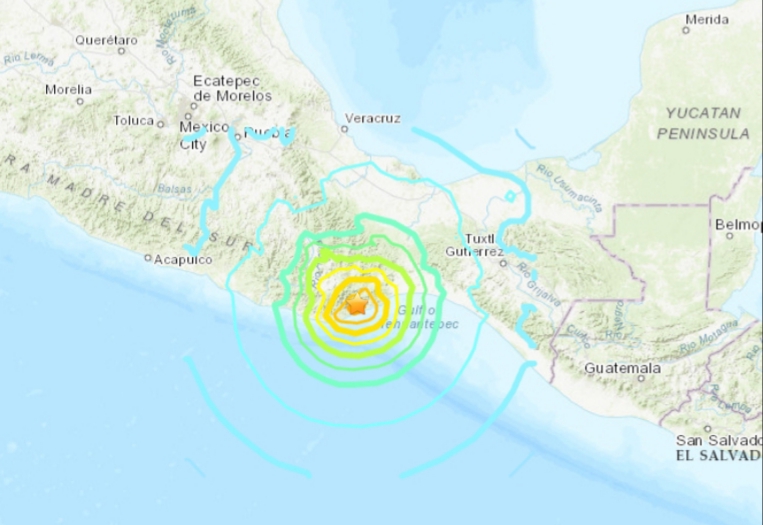Oxaca Earthquake: Another Shaky Tuesday on the Middle America Trench

I know, it seems like we were just talking about this, at least geologically speaking.

President Enrique Peña Nieto views earthquake damage after the September 2017 earthquake in Oaxaca, Mexico. Credit: Presidencia de la República Mexicana (CC BY 2.0)
I wrote about the September 8th 2017 Chiapas earthquake that happened 240 km to the southeast along the same subduction zone. And then there was a M7.2 225 km northwest of the 2020 event. We don’t have to go back far to find yet another large earthquake – a M7.4 hit 250 km northwest in March of 2012.
Several M7 or greater quakes striking within a handful of years in the same region is a lot, especially for the people living there. Unfortunately, this is business as usual on the Middle America Trench, the subduction zone where the Cocos plate dives beneath the North American plate. If you look at this map of M6.5+ earthquakes from 1919-2019, you can see how busy it’s been.
In fact, Tuesday’s temblor wasn’t unexpected, given the stresses induced by previous seismicity. This Temblor.net article does a marvelous job explaining how stress and strain operates along this fault zone.
(No, this does NOT mean Cascadia’s next. The faults aren’t even distant neighbors. Strain transmitting all the way from Oxaca to Washington State is about as likely as me being bothered by a door slammed in New York. The volcanoes aren’t fussed, either.)
Just like Californians know that the San Andreas and her sister faults will shake things up frequently and sometimes catastrophically, Oaxacans know their lives will continue to be severely shaken from time to time. Thankfully, building codes are making a start to accommodate the seismic reality, although there’s still a very long way to go. Mexico’s earthquake alert system can’t do much for those at the epicenter, but it’s helping folks nearby to get to safety. Even a good 15 seconds can get you to relative safety under sturdy bit of furniture. Early warning systems are limited, but they’re far better than no warning at all.
You can certainly expect more earthquake news from Southern Mexico in the not-too-distant future. We’ll probably do a deep-dive into the tectonics in a year or two. It’s a geologically fascinating region, though it’s a bit hard on its human citizens!

Rosetta Stones and Dana Hunter’s Unconformity wouldn’t be possible without you! If you like my content, there are many ways to show your support.
This website is a member of the Amazon Affiliates program. I get a small commission when you use my affiliate link to make a purchase.
Thank you so much for your support!



